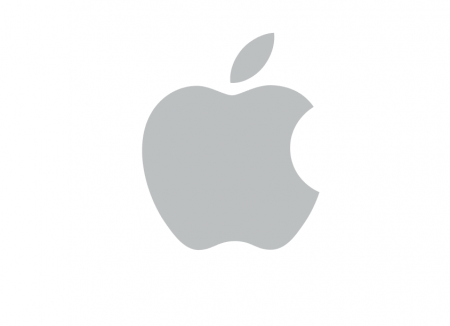The Foundation Of Apple
In 1976, Apple was founded by three men: Steve Jobs, Steve Wozniak and Ronald Wayne with the intention of selling Wozniak's hand-built Personal Computer named Apple 1.
The first Apple office
The first Apple office, in the garage of Steve Jobs' childhood home
The Apple 1 was sold as a motherboard with CPU, RAM and basic textual-video chips. It then lacked a built-in keyboard, monitor, case or any other Human Interface Devices (which was later added in 1977).
In July 1976, the Apple 1 went on sale and was sold for $666.66. Steve Wozniak took a special liking for repeated numbers and hence the fancy number as the price.
A group of people sitting at a tableDescription automatically generated
Steve Jobs and Steve Wozniak with the Apple-1 | Source: kidskunst.info
However, Ronald Wayne decided to leave the company only a couple of weeks after it was founded. Wayne then took a cheque of $800 which would have been worth almost $72 billion 40 years later. Wayne was the one to hand sketch the first Apple logo which was then replaced by the bitten apple logo designed by Rob Janoff in 1977.
apple's first logo
History of apple logo
History of Apple logo
The Apple Computer Inc. was incorporated on January 3rd, 1977. Mike Markkula, the multimillionaire who had taken interest in the Apple-1 provided the company required funding and business expertise. Mike Markkula was the 3rd employee with a one-third share in the company. He suggested a man named Michael Scott be the company's first president and CEO as he thought Steve was too young and undisciplined to be the CEO.
Steve & Mike
Steve & Mike | Source: businessinsider
The Apple II And III
It was in 1977 that the Apple II was introduced, also by Wozniak. VisiCalc (the world's first 'killer-app'), a ground-breaking spreadsheet and calculating software helped the Apple II computers to stand ahead of market leaders Tandy and Commodore PET. VisiCalc gave users an additional reason to buy the Apple II because of its office compatibility. With the introduction of colour graphics, the Apple II was able to revolutionize the computer industry.
Apple 2
The Apple II | Source: businessinsider
By 1978, Apple had a real office with several employees and an Apple II production line.
In the years that followed, revenues grew exponentially for the Apple company doubling every four months. Their yearly sales grew from $775,000 to $118 million between September 1977 and September 1980 (average annual growth rate of 533%).
Jobs and several employees were allowed to visit the Xerox PARC lab in 1979. It is world famous for the laser printer, mouse, ethernet networking and other technological accomplishments. Jobs and his engineers visited the PARC campus in return for the option to buy 100,000 shares of apple for $10 a share.
By the year 1980, the competition was growing difficult with IBM and Microsoft in the market. Apple released Apple III in the same year to compete with these companies in the corporate computing market. The Apple III was not as successful due to a design flaw. In order to reduce noise, Jobs insisted computers not have fans or vents which in turn created problems due to dangerous overheating. Thus, the Apple III lost to IBM computers.
However, Jobs had been convinced from the visit to the Xerox PARC labs that all future computers required to use a Graphical User Interface (GUI) like the ones used today. He immediately began the development of a GUI for Apple's next generation computer, Apple Lisa.
Unfortunately, Jobs was removed from the Lisa team due to infighting and became a part of the low-cost-computer project, the Macintosh. Lisa was released in 1983 and met with disastrous sales due to its high price and limited software support.
Apple went public on December 12, 1980, at $22 per share. According to EDN Network, Apple's $4.6 million shares sold out immediately and generated more capital than any other IPO (Initial Public Offering) since the Ford Motor Company in 1956. The IPO created $217 million in wealth for Steve Jobs, the largest shareholder. The company's IPO also created 300 other millionaires instantly.
The Macintosh
After being replaced from the Lisa team, Jobs became the lead of the Macintosh team. The Apple Macintosh is known as the most user-friendly computer to date. It is also known as the first mass-market personal computer to feature an integral GUI and mouse.
The Macintosh, unlike Lisa, was a success thanks to the intense marketing with the iconic '1984' commercial directed by Ridley Scott which aired during the Super Bowl and never again.Even though the graphics hardware used was very expensive, Apple decided to sell the Macintosh for a price that would put it in the reach of home users. Its black and white graphics and visual abilities attracted design professionals and it was particularly successful in the desktop publishing market due to it's the same. It had a carrying handle which made it portable and it looked friendly too.
Also Read: The History Of Google
The Macintosh was priced at $2,495 and went on sale in January 1984. It was good value for the money although not cheap. By the beginning of May 1984, 70,000 units were shipped as a result of the '1984' commercial.
In 1983, around the time of launch of the Macintosh, Jobs hired John Sculley as the new Apple CEO when Mark Markkula, the second CEO wanted to retire. Scully was the youngest CEO of Pepsi during the time, but jobs brought him to Apple with the legendary question 'Do you want to sell sugared water for the rest of your life? Or do you want to come with me and change the world?'
First Macintosh launch
However, tension grew between Jobs and Sculley when the Macintosh failed to break IBM's dominance. Moreover, Jobs liked doing things his own way while Sculley wanted strict oversight on future products as both Lisa and the Macintosh had not been able to compete with IBM and others at the time.


